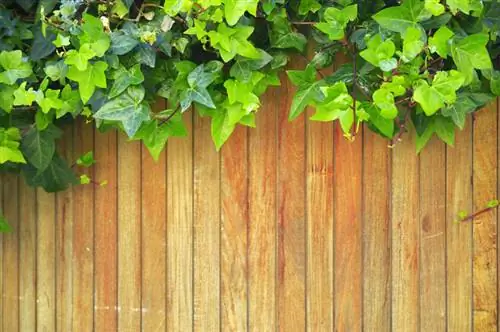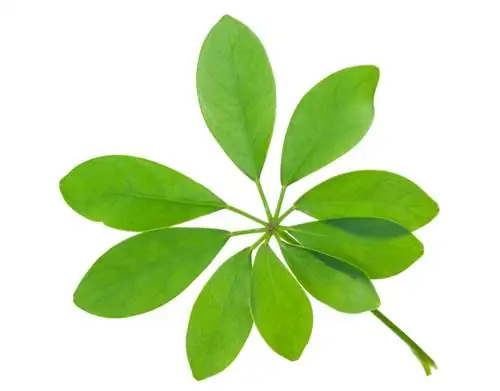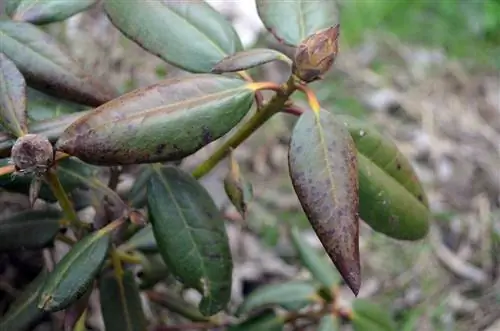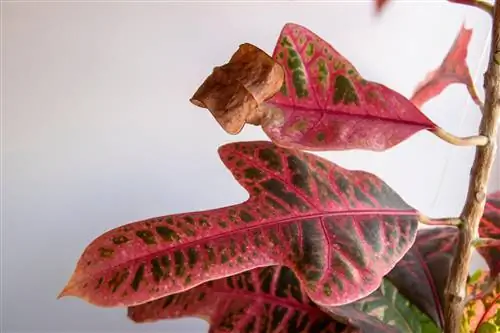- Author admin [email protected].
- Public 2023-12-16 16:46.
- Last modified 2025-06-01 06:02.
If ivy turns brown and loses its leaves, incorrect care - especially incorrect watering - is most often responsible. More rarely, pests or fungi can cause problems for the plant. What can you do if the ivy drops its leaves?

Why is my ivy losing leaves and what can I do about it?
Ivy usually loses leaves due to incorrect care such as too frequent watering, too bright a location or excessive fertilization. Pests or fungal infestation are rarely responsible. To counteract this, you should water the ivy properly, fertilize it and, if necessary, treat affected areas.
Possible causes of falling leaves
- Substrate too moist
- too bright location
- too many nutrients
- Pest Infestation
- Fungal infestation
- Earth too dry
Even if the ivy looks like it has dried up, it is almost never because the soil is too dry. An exception is winter. Especially in winter there is a risk that the substrate will also dry out completely. Therefore, water ivy regularly in winter.
The cause of falling leaves is usually that ivy is watered too frequently. The roots then literally drown and can no longer draw water.
Don't over-fertilize ivy! If at all, you should fertilize indoor ivy a maximum of every two weeks and use less fertilizer than stated on the package. It is better to repot ivy every spring.
Water ivy correctly - with sensitivity
The ivy soil must never dry out completely, but stagnant moisture is the death of every ivy plant. Only water ivy when the top layer of soil is completely dry.
Do not place ivy in the room or on the balcony on coasters where water could collect. If you don't want to do without coasters, pour off excess water immediately.
Fight fungi or pests
If the ivy drops leaves and you have not watered it too much or too little, pests or fungal infestation may be responsible.
Examine the leaves and especially the undersides of the leaves for pests.
Pot out the ivy and look at the roots. Sometimes root rot occurs, which is caused by too much moisture. Occasionally, pests such as grubs or black weevil larvae in the soil also cause leaves to fall off.
Tip
Never place ivy in the room directly next to radiators and avoid direct exposure to the sun. To increase the humidity, you should occasionally refresh the ivy with a flower sprayer (€9.00 on Amazon), especially in winter.






